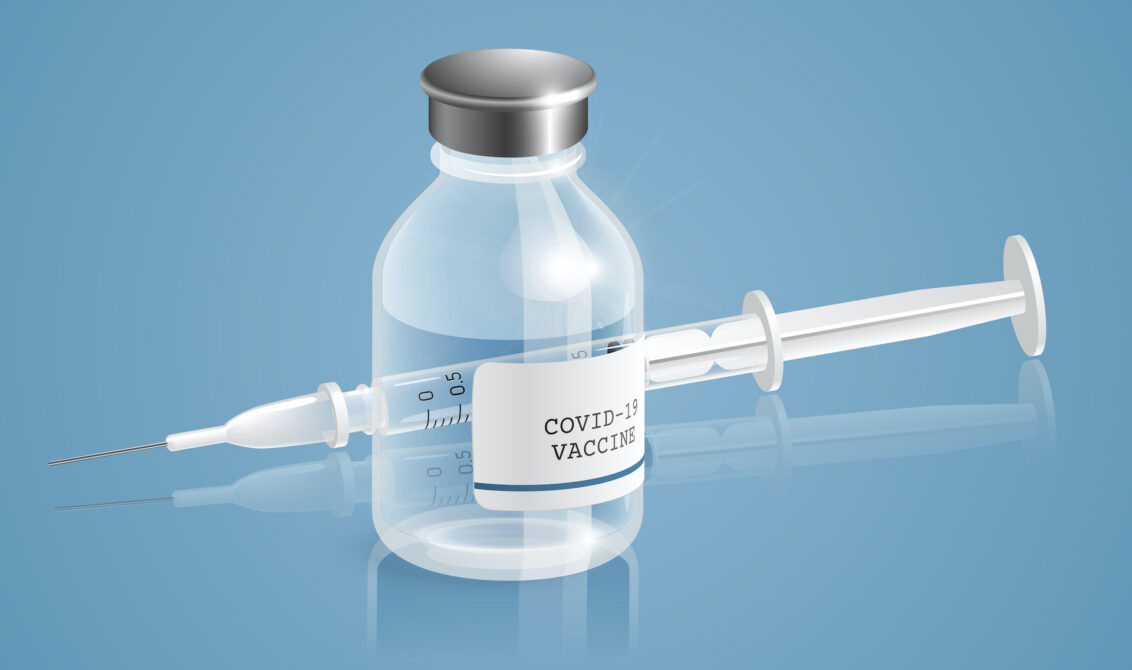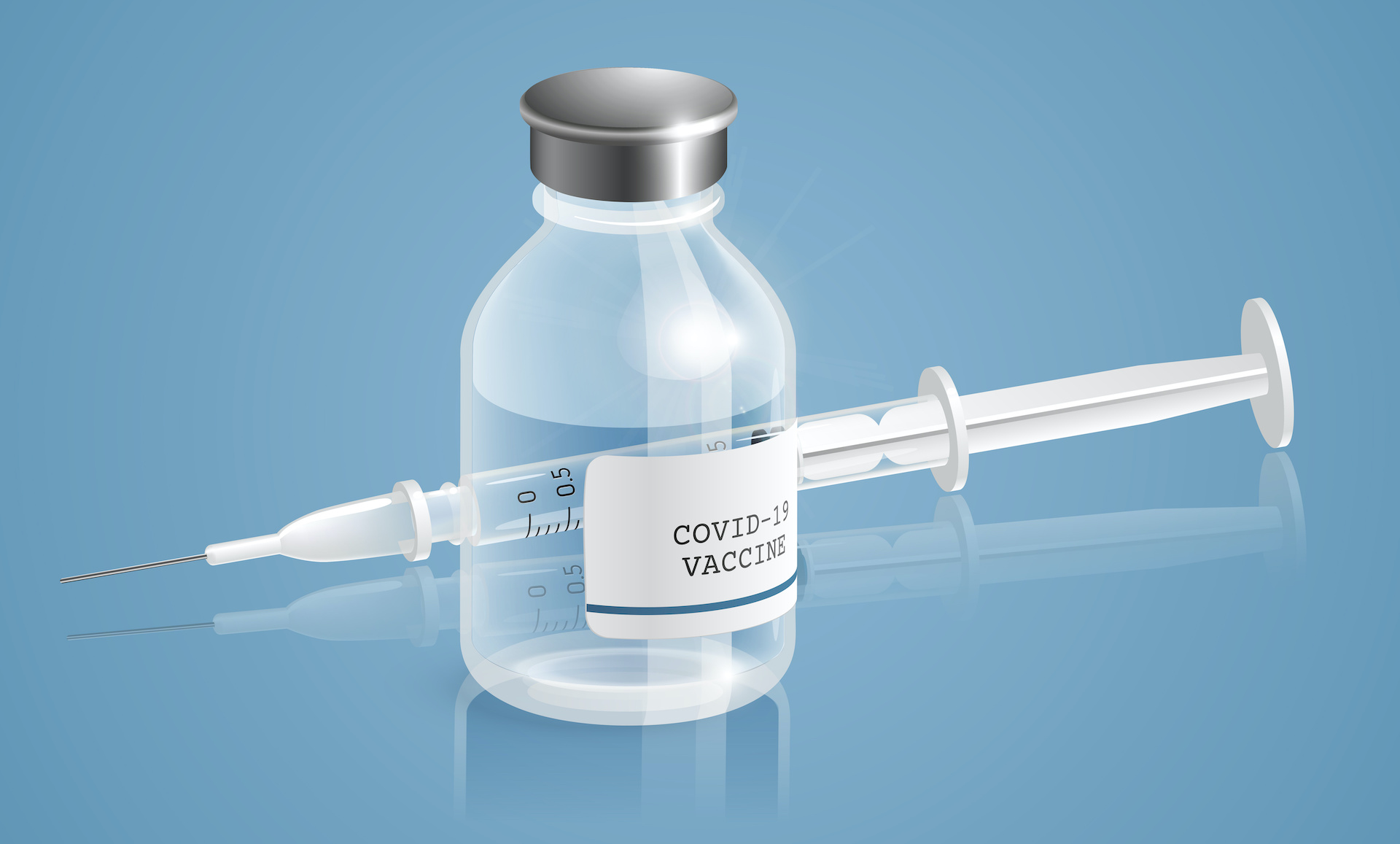Soon, the COVID-19 vaccine will be widely available to most employees. Is your company ready to help them get vaccinated and back to work? Attorney Rick Grimaldi, Partner at FisherPhillips LLP, shares insights to help employers get a plan in place now.

At long last the COVID-19 vaccines are here. While employers everywhere are breathing a sigh of relief, many are also wondering how to best handle getting their employees vaccinated and back to work.
Many employers have adopted a hybrid, split, or fully remote workforce. As some employers transition their teams back into offices, there are various considerations to tackle–top among them are vaccinations.
As COVID-19 vaccine production and administration efforts in the U.S. continue to ramp up, a new Pew Research survey finds public intent to get vaccinated is on the rise. “Overall, 19% of adults say they have already received at least one dose of a coronavirus vaccine. Another 50% say they definitely or probably plan to get vaccinated. Taken together, 69% of the public intends to get a vaccine – or already has – up significantly from 60% who said they planned to get vaccinated in November.”
“Despite the imminent widespread availability of vaccines and an increasing likelihood that workers will want to receive the shot, many employers don’t yet have a plan to deal with vaccinating their workforces,” says Rick Grimaldi, employment and labor attorney at the forefront of COVID-19 workplace issues and author of the new book FLEX: A Leader’s Guide to Staying Nimble and Mastering Transformative Change in the American Workplace. “Before you know it, it will be time to start bringing people back to work. To do that in the safest and quickest way possible, you need to start preparing now.”
Vaccine Deployment And The Workplace
What should employers do now to prepare for the imminent widespread distribution of vaccines? Read on for Grimaldi’s thoughts.
Develop a vaccine implementation plan now.
As Dr. Fauci explained, the number of available doses by March and April will allow for much more of a “mass vaccination approach.” For employers, this increases the likelihood of the mass vaccination of workforces sooner than later. With that in mind, your organization should be preparing right now for how you will encourage employees to get vaccinated so they can safely return to work.
Decide whether you will mandate the vaccine. (It’s your choice.)
As an employer, you can make the vaccine mandatory as long as you honor federal anti-discrimination laws. However, most employees are avoiding this option. Instead, they are trying to incentivize employees to be vaccinated voluntarily. Grimaldi points out that the issue of whether to mandate is very industry specific and employers must take consideration of those who object for health or religious reasons.
“Even if you don’t mandate the vaccine, you can address the potential roadblocks that might prevent employees from being vaccinated and reward employees with a variety of incentives,” says Grimaldi.
Mount an effective vaccine education campaign.
While concerns about vaccination side effects are legitimate, worries over contracting COVID-19 from the vaccine—and other safety concerns—are based on inaccurate information. You can help ease some of this apprehension by providing accurate information and offering clarifications to address misinformation directly. This includes being as forthcoming as possible about likely side effects and providing information about the benefits of getting vaccinated.
“Employees who understand how the vaccine has been tested, its effectiveness, and track record are generally more likely to get vaccinated,” says Grimaldi. “In providing access to helpful information, you should be mindful that employees place much more confidence in information from established healthcare authorities rather than material from the vaccine manufacturers or political figures.”
Consider whether you will offer on-site vaccinations.
If you are employer of a larger organization, you may be in a position to establish an on-site vaccination center, permitting healthcare personnel on your property to administer the vaccine to your workers and perhaps members of the local community. While doing so would most likely increase the vaccination rates and reduce the time your workers would need to spend traveling to a vaccination center, it also raises several legal issues related to premises liability, privacy, and more.
Start planning now for post-vaccination issues.
The Centers for Disease Control and Prevention (CDC) indicates that it is not uncommon for COVID-19 vaccine recipients to experience side effects, such as pain at the injection site, fatigue, headache, and chills, most often within 24 hours of receiving the second dose of the vaccine. Employers should proactively consider how to handle issues that arise as a result. Perhaps you will avoid scheduling employees to work the day after receiving the second dose or provide additional paid time off afterward. You might also consider working with your workforce to stagger the vaccine appointments—especially the second dose—within departments or units.
Don’t ease up on workplace safety measures.
According to the CDC, not enough information is currently available to say if or when it will stop recommending that people wear masks and avoid close contact with others once COVID-19 vaccinations become widespread. Thus, even after your workers receive their full vaccine doses, you should continue to require them to adhere to common CDC recommendations until experts better understand the real-world protection that COVID-19 vaccines provide, such as:
- Wearing a mask over nose and mouth;
- Staying at least six feet away from others;
- Avoiding crowds;
- Avoiding poorly ventilated spaces;
- And washing hands often.
“Having a well thought out vaccination and return to work plan for your organization will help you get back to business quicker, but it also helps the whole country,” concludes Grimaldi. “Employers can play a role in getting more people vaccinated and combatting the pandemic. This is one way you can make a difference and help save lives.”
Rick Grimaldi is a workplace trends expert and the author of FLEX: A Leader’s Guide to Staying Nimble and Mastering Transformative Change in the American Workplace. Rick’s unique perspective comes from his diverse career in high-ranking public service positions, as a human resources and labor relations professional for an international hi-tech company, and presently in private practice as a partner with Fisher Phillips, LLP, one of America’s preeminent management side labor and employment law firms. Day to day, Rick works with companies to help them adapt to the ever-changing business environment, achieve their workplace goals, and become better employers. Rick is an internationally recognized writer and keynote speaker, and has been selected through a peer review process as one of The Best Lawyers in America© in three of the last four years.
© YFS Magazine. All Rights Reserved. Copying prohibited. All material is protected by U.S. and international copyright laws. Unauthorized reproduction or distribution of this material is prohibited. Sharing of this material under Attribution-NonCommercial-NoDerivatives 4.0 International terms, listed here, is permitted.














